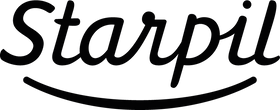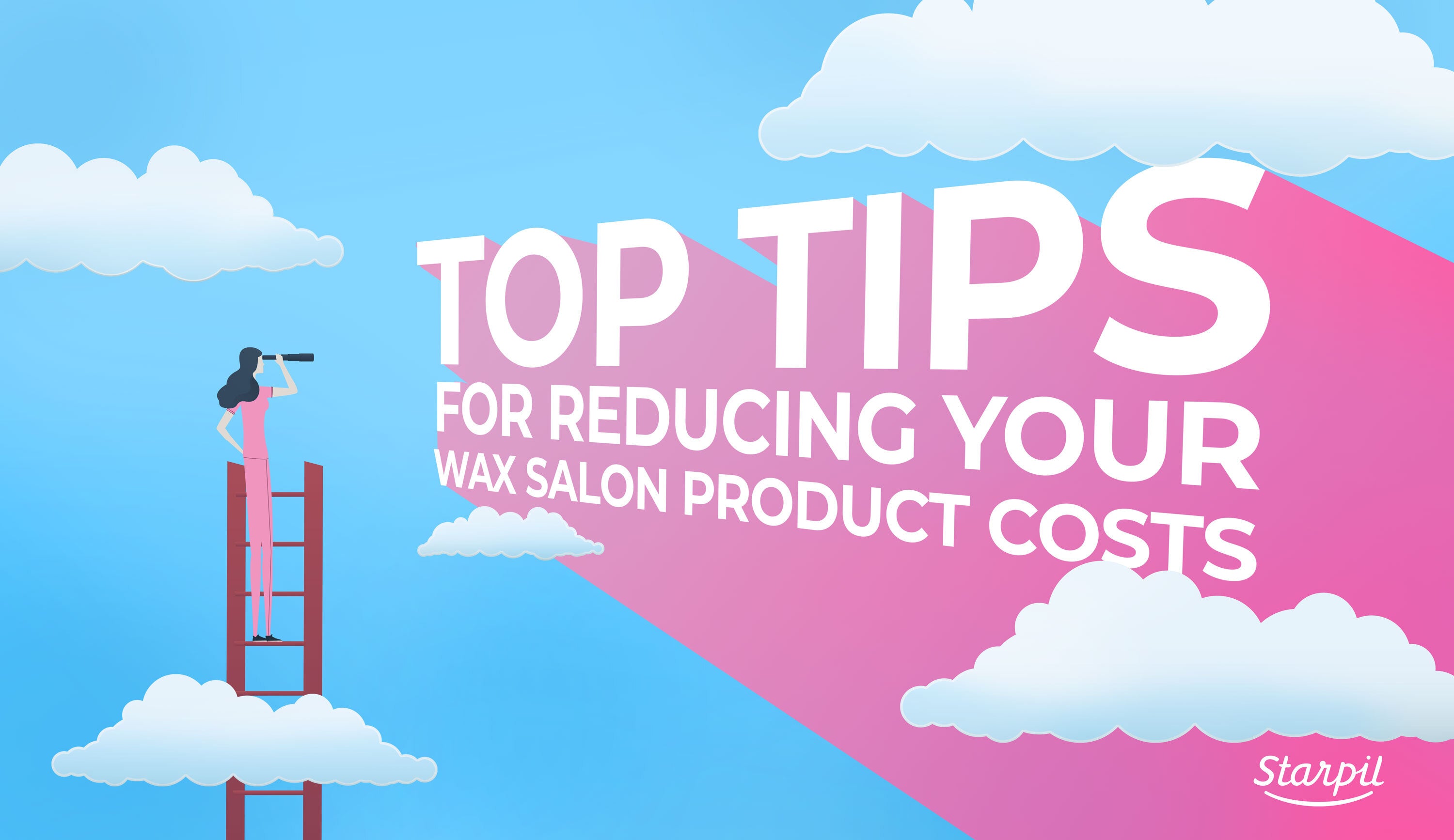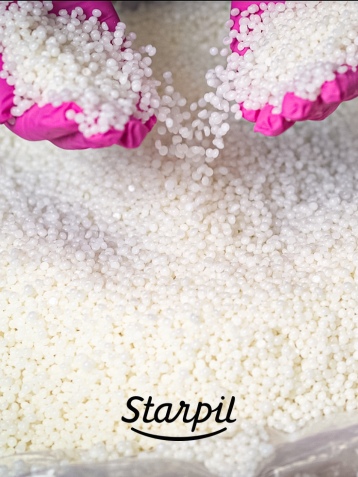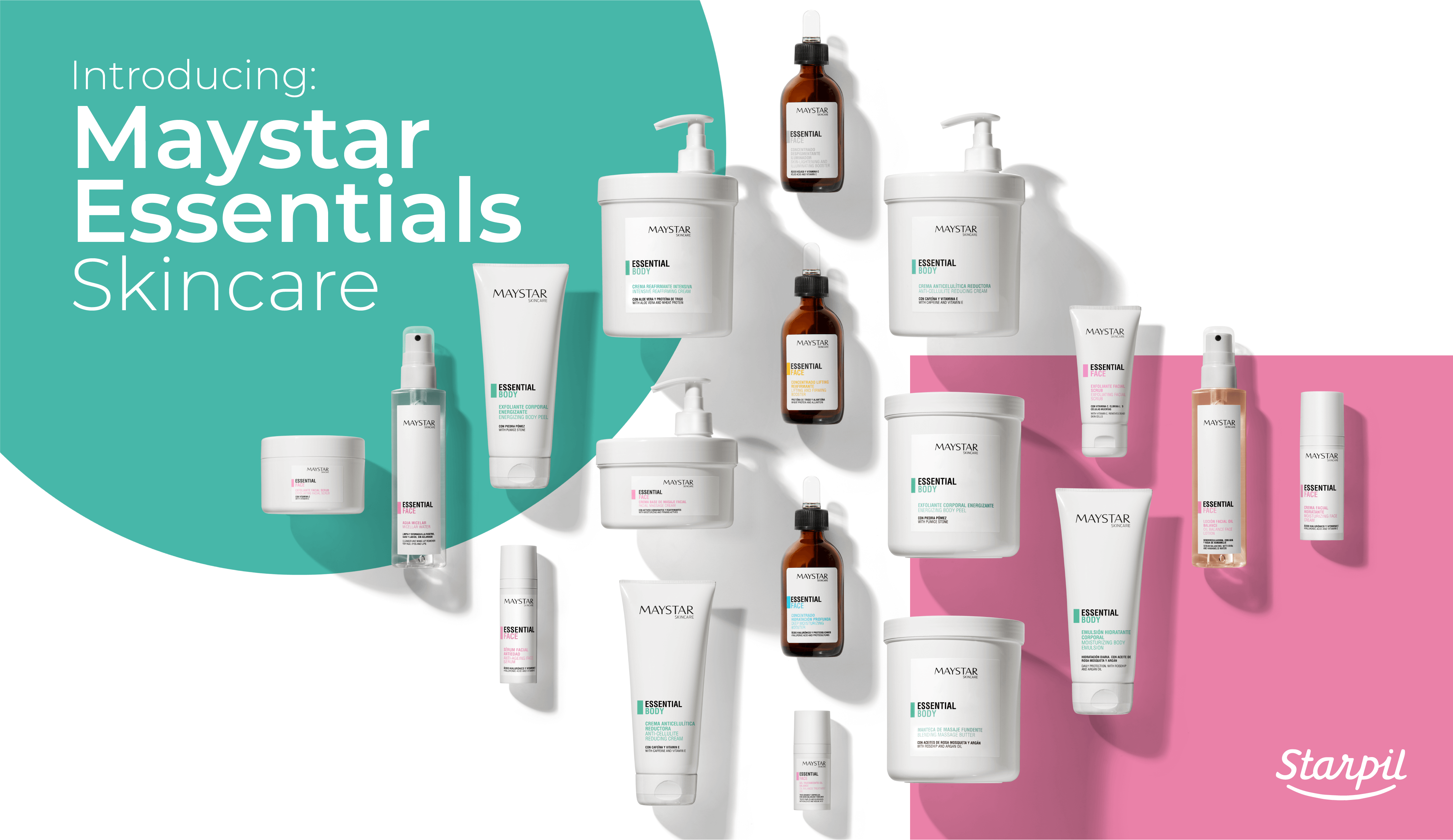Painless Hair Removal with Waxing: The Complete Guide

We all wish that painless hair removal was a real thing in the waxing world. Though completely painless hair removal waxing might not even seem possible, many wonder what they can do to have a more painless waxing experience. After all, with painless waxing comes the ultimate hair removal experience for many, and creates the best of both worlds between efficiency and effectiveness.
Table of Contents
- Does Waxing Hurt?
- Why Does Waxing Hurt?
- How to Make Waxing Hurt Less
- How to Prep Skin to Make Waxing Less Painful
- What’s the Best Painless Wax for Hair Removal?
- How to Make Waxing Painless on the Body
- How to Relieve Waxing Pain After Hair Removal
- Final Thoughts
If you’re a waxing professional wanting to know how to reduce waxing pain for clients or just someone wanting tips for painless wax (or more painless waxing), this article is for you. Here, we’ll discuss how you can make waxing more comfortable for your clients and yourself.
Does Waxing Hurt?
Let’s not split hairs, (ahem), waxing is not generally considered a pleasant tip-toe t
Let’s not keep the rose-tinted glasses on here: though waxing is incredibly effective, it’s not exactly known to be extremely comfortable or pain-free - plus, there’s, unfortunately, no such thing as totally painless body hair removal.
The potential pain from waxing hair removal is determined by a client’s tolerance, where hair removal is performed, the skin structure, and the client’s skin type.
Waxing pain can vary from client to client, and there are plenty of measures that can be taken to reduce the pain that people do experience.
READ: Why Using Pre & Post-Wax Products is a MUST!
Why Does Waxing Hurt?

The hair that we see on the skin’s surface was once at the bulb. The bulb is attached to the body via blood vessels and nerve endings, which make up the root.
This is where it gets its source of melanin and collagen to build upon itself in the growing phase. The hair shaft and bulb are ripped away from the follicle and the attachments to the blood supply. When the hair shaft and bulb are pulled from the root, they’re being plucked away from those nerve endings.
Pulling hairs from the root by waxing might just be the tip of the iceberg because pain can also arise from light swelling and tenderness.
If the skin is shocked when hair is removed from the root, it can cause a histamine reaction. Histamine reactions take the form of red hives, or bumps, or rashes.
Some people can also inadvertently make their waxing experience more painful simply from anticipation, or by creating mental pain from the fear of pain.
READ: What is a Histamine Reaction After Waxing?
How Much Does Waxing Hurt?
Though pain can be subjective, certain body areas or clients can experience more pain than others.
Areas like the face, pubic mound, and underarms can be pretty sensitive for any gender, but chest hair waxing for men can be quite intense. Some people liken the pain of waxing to ripping off a Band-Aid®.
READ: What is a Histamine Reaction After Waxing?
Does Waxing Get Less Painful?
Waxing can be more painful for first-time waxers, as well as for those with strong, thick hair. Clients with uneven hair growth cycles or those who shave in-between waxing can experience more pain because of the different hair lengths. The subtle nuances of the shorter and longer hairs can make the pain more noticeable.
Clients who adopt regular skincare or pre and post-wax care may find waxing less painful over time. With all of these factors in mind, waxing can get less painful as time goes on with the right routine.
READ: Starpil Wax Product Ingredients You’ll Love
How to Make Waxing Hurt Less
Aside from the routine clients should practice before and in between waxing to reduce pain, there are certain things waxing professionals can do when clients ask how to make waxing less painful.
Though you would be out of luck if you were wondering how to remove body hair painlessly (since there’s no such thing as painless hair removal wax!), there are still ways to significantly reduce waxing pain. Some of these factors include:
- Your education
- Your intake process
- The pre-wax routine you provide
- The wax formula you use
- Your waxing routine
- Your post-wax care routine
Your Waxing Education and Intake Process
How you educate your clients on what to do before their appointment can make a big difference in their pain levels while on your table.
Be sure to have this information on your website or sent to every client upon booking their appointment via SMS or email.
The most important things they can do to reduce waxing pain are to…
- Eat foods rich in antioxidants, vitamins, minerals, and high water content. Avoid excessive alcohol, caffeine, refined sugars, white flour, fried foods, or saturated fats.
- Drink a lot of water
- Exfoliate skin the day before and keep skin hydrated.
- Avoiding excessive sun exposure.
- Take an anti-inflammatory about an hour beforehand (avoid ones that act as blood thinners like Aspirin).
- Exercise and get enough sleep the day/night before waxing.
- Apply numbing cream before the appointment if pain tolerances are especially low.
Go over your client intake form with every client, even if they’ve been coming to you for a long time. You never know if they’ve switched medications, or forgot that they used a resurfacing peel or retinoid product within the last few days.
Carefully examine your clients’ skin before each service, again, even if they’re long-time clients.
Upon closer inspection, you can find that their skin is excessively dry or oily. Drier skin may be more sensitive and oily skin can alter the effects of waxing, making it necessary to go over the same area more than once. Both of these factors can increase the risk of waxing pain.
Your initial skin overview should also include checking on the length of hair to be waxed. The length of hair can be a factor in the degree of pain your clients’ experiences. Most hair types need to be ¼ of an inch long for waxing. Waxing hair that’s longer than that may be more painful, while shorter hairs might not take, causing multiple go-ins with the wax, often to no avail.
READ: The Complete Guide to Hair Growth After Waxing
How to Prep Skin to Make Waxing Less Painful
After you’ve properly assessed the state of your client’s skin, you need to address its specific needs.
For example, if their skin is too dry, it should be nourished and hydrated by applying a post-wax care oil even before the cleansing step. Dry skin is lacking in support and needs reinforcements before hair removal.
If the skin is too oily, the wax won’t stick, creating patchy hair removal that will require multiple strips. Skin that’s already sensitive is more prone to burns, hives, and skin lifting.
Your client’s specific needs should determine the proper pre and post-care formulas and the best wax to address their needs.
For the best pre-wax care routine, you’ll want to use products that cleanse and exfoliate the skin to remove dead skin cells and debris to create the perfect surface for a less painful waxing service.
For normal skin types, use Starpil’s Original Pre-Wax Gel to create this nourishing pre-wax experience. For more sensitive skin that’s prone to inflammation and irritation, or for those with especially low pain tolerances, Starpil’s Starsoft Pre-Wax Gel or Calendula Pre-Wax Gel will get skin in its best state before hair removal.
READ: How to Treat & Prevent Ingrown Hairs
What’s the Best Painless Wax for Hair Removal?
Since we already know that hair removal from the root can be painful to some degree, there is no such thing as a completely painless wax for hair removal or painless wax beads.
However, using film hard waxes is a step in the right direction, as they have lower temperature applications and grip hair without sticking or adhering to the skin.
Starsoft hard wax beads and Starsoft pre and post-care products contain neurosensory properties that can reduce pain before it starts, which allow them to be the most painless hair removal products possible.
Calendula Film Hard Wax Beads are loaded with super calming calendula and tea tree oil, which not only soothe skin before the hair is removed but dramatically reduce redness and inflammation to create the closest natural painless hair removal process possible.
How to Make Wax Strips Hurt Less
Creating a superior hard wax strip is integral to keeping reducing pain when waxing. When learning how to make wax strips hurt less, you need to use the correct amount of wax on any given space so that the strips don't break or crack.
Start by using thinner strips on the face and thicker ones on larger areas like the legs, chest, or back. When creating thinner strips, dip your spatula in at the edges of your wax well on your wax warmer. This area keeps your wax at a slightly higher temperature.
For thicker strips, take from the middle of the warmer. When creating your strip, ensure that all of the edges are smooth. If they aren't, hair removal will not only not be even but the pain distribution will be patchy.
READ: The Complete Bikini/Brazilian Wax Guide
How to Make Waxing Painless on the Body
Just as pain thresholds can vary on skin types, so can they on different parts of the body where the skin is different. Here are a few localized tips on painless bikini hair removal, how to remove facial hair painlessly, and how to remove leg hair painlessly.
How to Make a Brazilian Wax Less Painful
- Don’t get a Brazilian or bikini wax done right before, during, or after a period. Pain thresholds go down immensely in the time around a period. Also, intimate waxing services are best after lunch when the body’s pain threshold is higher.
- Your client should come wearing loose-fitting clothes made from 100% cotton. Not only is it light and breathable, but it can be gentle against the skin.
- Offer a post-wax vajacial to flush the skin, soothe tender skin, and keep intimate areas protected from bacteria growth. Spray skin with a blend of chilled aloe vera and rosewater, and then apply a cooled Brazilian Waxing Mask to infuse skin with antioxidants and essential ingredients.
- One of the most essential tips to reduce pain during intimate waxing is not to shave in-between services. Shaving can disrupt the hair growth cycle and increase the likeliness of ingrown hairs and post-waxing breakouts.
How to Remove Facial Hair Painlessly
Again, no waxing can be completely painless, especially on a sensitive area like the face, but here are a few tips to provide a more comfortable hair removal experience on the face.
- Know the difference between women’s and men’s facial skin. Most genders can experience sensitive facial skin, but many men and specifically trans men can be more prone to oil, acne, and ingrown hairs.
- Facial skin is more delicate and is more prone to skin lifting, sensitivities, and histamine reactions. Therefore, it’s really important to use the right formula according to the skin’s needs.
READ: The Complete Guide to Waxing Facial Hair
How to Remove Leg Hair Painlessly
Strategies for achieving the most painless hair removal for legs possible are similar to that of bikini line and facial painless hair removal strategies.
The most important strategy to implement for lowering leg wax pain is to exfoliate and cleanse skin prior to a wax, and properly hydrate and moisturize after. Make sure your hair is of the proper length - especially if you’re looking for DIY painless hair removal strategies.
If you’ve shaved recently, but want to try at-home waxing due to less than stellar results, hold off until your leg hair has grown out more to reduce pain and skin irritation.
READ: The Complete Guide to Leg Waxing
How to Relieve Waxing Pain After Hair Removal
Aside from applying pressure onto the skin after removing a wax strip, your post-wax care routine and the take-home care you recommend to your client are key in how to relieve waxing pain after hair removal.
After you’re all done with the removal part, gently massage the skin with a post-wax care oil to support blood flow and provide a buffer between the skin and the environment. A product like this can also soothe the skin when it contains calming ingredients or speed up skin recovery time.
For some people, waxing can result in histamine reactions that last somewhat longer than the usual redness. If strong or more painful histamine reactions occur on a client, including hives, bumps, and long-lasting redness, recommend an antihistamine like Benadryl or a hydrocortisone cream.
For more common symptoms after waxing or for more sensitive skin types, we recommend using either Starsoft Post-Wax Lotion or Calendula Post-Wax Care Mousse. These products are specially formulated to speed up skin’s PH level recovery after waxing. If you see hives after a Brazilian wax, you could soothe them with a Brazilian Waxing Mask.
READ: Post-Wax Care: Tips & Best Practices
Tips for Increasing Your Pain Threshold to Waxing:
Much like waxing on your period or after lunch can affect your pain tolerance, so can other lifestyle choices. The key to increasing your pain tolerance to waxing can come from releasing endorphins and supporting the body in its natural functions. The more “damage” you do to your body, the more damage control it has to do, which can tie up its precious resources that could be going toward supporting skin during hair removal.
Things that can release endorphins, like exercise, stress management, and even cuddling can help make a waxing session that much more bearable for sensitive clients.
"Cudding stimulates the production of specific hormones, like oxytocin, and neurotransmitters in the brain that positively impact the body (and its behaivor). Oxytocin also plays a role in increasing our serotonin and dopamine levels, both of which can increase a sense of well-being"
Here are some more fun tips in this video by POPxo:
Final Thoughts
We’re at a point where we can all accept that painless hair removal isn’t that far off for a lot of people if they play their cards right and have the right routine. With the right tips and tricks, reducing waxing pain can be a reality for all those who love the results this service brings.
From practicing the right pre and post-wax care to making lifestyle changes to reduce irritation and waxing pain, having amazing hair removal results and a painless waxing service can be in your clients’ future!








Comments